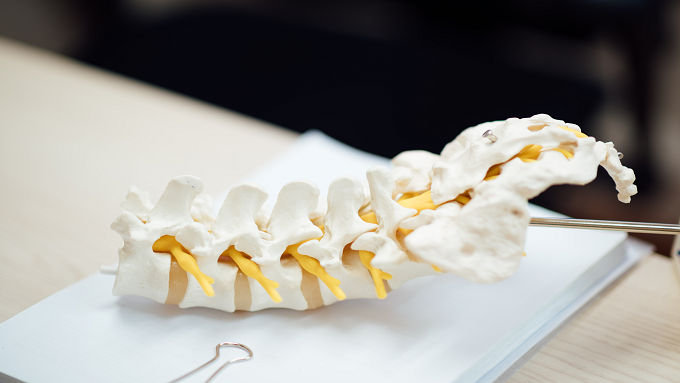The Role of Ergonomic Interventions to Prevent the Occurrence of Carpal Tunnel Syndrome in Dentists
-
Highlights
- Dentists are at a higher risk of experiencing symptoms of carpal tunnel syndrome (CTS) compared to non-dental healthcare workers. This is due to repetitive movements, the use of vibrating tools, and prolonged exposure to unergonomic postures.
- Ergonomic interventions are a key method for preventing CTS in dentists, aiming to reduce the risk of repetitive injuries that can lead to long-term disability.
Abstract
Background: Carpal tunnel syndrome (CTS) is a peripheral mononeuropathy caused by compression of the median nerve. Dentists are susceptible to CTS due to awkward static body postures and ergonomic issues with the wrist, including the use of vibrating instruments, repetitive movements, large muscle forces, and awkward postures such as flexion, extension, and ulnar and radial deviation. Objective: This study aimed to review various studies on ergonomic interventions to prevent CTS in dentists. Material and Method: This research followed PRISMA-ScR guidelines and used PCC framework (Population, Concept, and Context) for article selection process. Inclusion criteria consisted of articles with an experimental research design published between 2011 and 2021. Exclusion criteria included scoping reviews, rapid reviews, systematic reviews, gray literature, and articles that were not fully accessible. All keywords were taken from MeSH terms, and literature searches were conducted using Boolean searches on the PubMed, Wiley, and Google Scholar databases on August 17, 2021. Result: There were limited experimental research articles on CTS in dentists. Out of 887 articles obtained, only five were selected, with a total of 357 participants. The research subjects included general dentists, specialist dentists, and dental hygienists, both with and without CTS. Conclusion: Ergonomic interventions play a crucial role in preventing CTS in dentists. Clinically, these interventions are associated with improved hand function, reduced pain in the wrist/hand, and increased pinch and grip strength.
Abichandani, S., Shaikh, S., Nadiger, R. 2013. Carpal tunnel syndrome – an occupational hazard facing dentistry. International Dental Journal, 63(5): 230–236. doi: 10.1111/idj.12037.
Aghilinejad, M., Kabir-Mokamelkhah, E., Talebi, A., et al. 2016. The effect of magnification lenses on reducing musculoskeletal discomfort among dentists. Medical journal of the Islamic Republic of Iran, 30: 473. Available at: http://www.ncbi.nlm.nih.gov/pubmed/28491848
Alhusain, F. A., Almohrij, M., Althukeir, F., et al. 2019. Prevalence of carpal tunnel syndrome symptoms among dentists working in Riyadh. Annals of Saudi Medicine, 39(2): 104–111. doi: 10.5144/0256-4947.2019.07.03.1405.
Anggayanti, N. A., Adiatmika, I. P. G. 2015. Carpal tunnel syndrome and its relation to dentist. Padjadjaran Journal of Dentistry, 27(3). doi: 10.24198/pjd.vol27no3.13556.
Anggraini, W., Ranggaini, D., Ariyani, A. P., et al. 2024. World trends in dental ergonomics research: A bibliometric analysis. International Journal of Environmental Research and Public Health, 21(4): 493. doi: 10.3390/ijerph21040493.
Annisa, D., Rianawati, S. B., Rahayu, M et al. 2021. Carpal tunnel syndrome (diagnosis and management). Journal of Pain, Vertigo and Headache, 1: 6–7. Available at: https://download.garuda.kemdikbud.go.id/article.php?article=2995292&val=25853&title=CARPAL%20TUNNEL%20SYNDROME%20DIAGNOSIS%20AND%20MANAGEMENT
Ariyani, A. P., Anggraini, W., Roeslan, B. O., et al. 2024. Dentist: Wrist position, handgrip strength, and body mass index associated with carpal tunnel syndrome in daily practice. Manuju: Malahayati Nursing Journal, 6(9): 3821–3832. Available at: https://repository.karyailmiah.trisakti.ac.id/documents/repository/artikel_annisaa-putri-ariyani-dentist-wrist-position-handgrip-strength-and-body-mass-index-associated-with-carpal-tunnel-syndrome-in-daily-practice.pdf
Brown, J., Burke, F. J. T., Macdonald, E. B., et al. 2010. Dental practitioners and ill health retirement: Causes, outcomes and re-employment. British Dental Journal, 209(5): E7–E7. doi: 10.1038/sj.bdj.2010.813.
Chopra, A. 2014. Musculoskeletal disorders in dentistry- A review. JSM Dentistry, 2(3): 1–4. Available at: https://www.jscimedcentral.com/public/assets/articles/dentistry-2-1032.pdf
Das, H., Motghare, V., Singh, M. 2018. Ergonomics in dentistry: Narrative review. International Journal of Applied Dental Sciences, 4(4). Available at: https://www.oraljournal.com/archives/2018/4/4/B/4-4-14
Dehghan, N., Aghilinejad, M., Nassiri-Kashani, M., et al. 2016. The effect of a multifaceted ergonomic intervention program on reducing musculoskeletal disorders in dentists. Medical journal of the Islamic Republic of Iran, 30: 472. Available at: http://www.ncbi.nlm.nih.gov/pubmed/28491847
Dong, H. et al. 2005. The effects of finger rest positions on hand muscle load and pinch force in simulated dental hygiene work. Journal of Dental Education, 69(4): 453–460. doi: 15800259.
Haas, Y., Barr, A., Loomer, P., et al. 2020. Prevalence of self-reported musculoskeletal disorders of the hand and associated conducted therapy approaches among dentists and dental assistants in Germany. PLOS ONE. Edited by S. Bulduk, 15(11): e0241564. doi: 10.1371/journal.pone.0241564.
Horng, Yi-Shiung., Hsieh, S., Tu, Y., et al. 2011. The comparative effectiveness of tendon and nerve gliding exercises in patients with carpal tunnel syndrome. American Journal of Physical Medicine & Rehabilitation, 90(6): 435–442. doi: 10.1097/PHM.0b013e318214eaaf.
Huang, W.-T., Wang, C. T., Ho, C. H., et al. 2023. Carpal tunnel syndrome in dentists compared to other populations: A nationwide population-based study in Taiwan. PLOS ONE. Edited by H. Ghasemi, 18(6): e0287351. doi: 10.1371/journal.pone.0287351.
Hulshof, C. T. J., Pega, F., Neupane, S., et al. 2021. The prevalence of occupational exposure to ergonomic risk factors: A systematic review and meta-analysis from the WHO/ILO Joint Estimates of the Work-related Burden of Disease and Injury. Environment International, 146: 106157. doi: 10.1016/j.envint.2020.106157.
Ijaz, M. J., Karimi, H., Gillani, S. A., et al. 2022. Effect of median nerve neuromobilization on functional status in patients with carpal tunnel syndrome: A double blinded randomized control trial. Journal of the Pakistan Medical Association, 72(4): 605–609. doi: 10.47391/JPMA.2212.
Jee, K. S., Ng, P. K., Saptari, A., et al. 2015. Roles of pinch technique and pinch force in carpal tunnel syndrome: A review. International Conference on Technology and Environmental Science. Available at: https://www.researchgate.net/publication/284023009_Roles_of_Pinch_Technique_and_Pinch_Force_in_Carpal_Tunnel_Syndrome_A_Review
Kumar, M., Pai, K. M., Vineetha, R. 2020. Occupation-related musculoskeletal disorders among dental professionals. Medicine and Pharmacy Reports, 93(4): 405–409. doi: 10.15386/mpr-1581.
Li, L., Li, Y., Wang, H., et al. 2020. Effect of force level and gender on pinch force perception in healthy adults. i-Perception, 11(3). doi: 10.1177/2041669520927043.
Li, L., Li, Y., Wu, C., et al. 2020. Test–retest reliability of tip, key, and palmar pinch force sense in healthy adults. BMC Musculoskeletal Disorders, 21(1): 189. doi: 10.1186/s12891-020-3187-7.
Massachusetts Institute of Technology. 2022. Database search tips: Boolean operators, MIT Libraries. Available at: https://libguides.mit.edu/c.php?g=175963&p=1158594
Occupational Health Clinics for Ontario Workers. 2016. Carpal tunnel syndrome prevention through intervention. OHCOW. Available at: https://www.ohcow.on.ca/edit/files/carpal_tunnel_syndrome.pdf
Padhye, N. M., Padhye, A. M., Gupta, H. S. 2017. Effect of pre-procedural chair-side finger stretches on pinch strength amongst dental cohort- A biomechanical study. Journal of Clinical and Diagnostic Research : JCDR, 11(4): ZC82–ZC85. doi: 10.7860/JCDR/2017/24974.9701.
Parmar, U., M.Soni, K. 2021. Effectiveness of physiotherapy intervention along with ergonomics among dentists with carpal tunnel syndrome: A randomized controlled trial. IOSR Journal of Dental and Medical Sciences, 20(4): 52–59. Available at: https://www.iosrjournals.org/iosr-jdms/papers/Vol20-issue4/Series-1/K2004015259.pdf
Rempel, D., Lee, D. L., Dawson, K., et al. 2012. The effects of periodontal curette handle weight and diameter on arm pain. The Journal of the American Dental Association, 143(10): 1105–1113. doi: 10.14219/jada.archive.2012.0041.
Ryan, E. 2022. Boolean operators: Quick guide, examples & tips, Scribbr. Available at: https://www.scribbr.com/working-with-sources/boolean-operators/.
Shivpaul, R. A. 2022. The effects of a visco-elastic polymer glove on hand-arm vibration, muscle activity, and comfort during simulated power tool use. University of Ontario Institute of Technology. Available at: https://ontariotechu.scholaris.ca/items/eb61e6f2-dd2f-4354-bf1d-1a595eee6665/full
Suedbeck, J. R., Tolle, S. L., McCombs, G., et al. 2017. Effects of instrument handle design on dental hygienists’ forearm muscle activity during scaling. Journal of Dental Hygiene : JDH, 91(3): 47–54. Available at: http://www.ncbi.nlm.nih.gov/pubmed/29118071
Tricco, A. C., Lillie, E., Zarin, W et al. 2018. PRISMA extension for scoping reviews (PRISMA-ScR): checklist and explanation. Annals of Internal Medicine, 169(7): 467–473. doi: 10.7326/M18-0850.
Copyright (c) 2025 Vallerie Trisha, Wita Anggraini, Indrani Sulistyowati, Annisaa Putri Ariyani, Dicha Yuliadewi Rahmawati

This work is licensed under a Creative Commons Attribution 4.0 International License.
1. The journal allows the author(s) to hold the copyright of the article without restrictions.
2. The journal allows the author(s) to retain publishing rights without restrictions.
3. The legal formal aspect of journal publication accessibility refers to Creative Commons Attribution 4.0 International License (CC-BY).



































